Ashly RPS-18 Handleiding
Ashly
Niet gecategoriseerd
RPS-18
Bekijk gratis de handleiding van Ashly RPS-18 (6 pagina’s), behorend tot de categorie Niet gecategoriseerd. Deze gids werd als nuttig beoordeeld door 54 mensen en kreeg gemiddeld 4.5 sterren uit 27.5 reviews. Heb je een vraag over Ashly RPS-18 of wil je andere gebruikers van dit product iets vragen? Stel een vraag
Pagina 1/6

Ashly WR-5 Remote Control
1. Introduction
The WR-5 is a microprocessor based serial data remote control
unit for Ashly NE or NX products. Compatible products currently
include Pema ampliers, ne8800 and ne4800 system processors,
the ne24.24M matrix processor, all models of the NE multichannel
power ampliers, and nXe/nXp ampliers. Using Proteane software,
six function select buttons and two parameter adjust buttons are
available to control a limited range of assigned functions within
their host product. Up to four WR-5 units can be daisy-chained and
phantom powered from one host, and even more can be added using
an in-line power supply adapter such as the Ashly RPS-18. Note:
When an WR-5 is connected to an Ashly product, no other serial
communications devices, including the Ashly RD-8C remote fader
controller, may be used with that product.
The WR-5 is designed to t into a standard US electrical wall
box. Electrical connections to the host unit are made using a four
conductor low gauge wire terminated with Euroblock connectors.
There is also a two pin jumper labeled “J6” which requires the
provided female jumper to be installed in specic situations (see
section 2). Note: The WR-5E is the electrical equivalent to the WR-
5, but designed to t into a UK electrical box. A standard decora
plate (not included) can be purchased separately to cover the WR-5
electrical box and satisfy the aesthetic needs of the installation.
Note: Avoid static shock disruptions by mounting the WR-5 to an
earth-grounded metal wall box, or by earth-grounding the metal
cover plate. This prevents potential static discharge from owing
back through the data wires to the host device.
Each of six buttons on the WR-5 can be programmed through
Proteane Software to engage one of the following functions (if
available): preset recall, preset scroll, gain control, channel
engage/mute, zone source selection, logic output active high,
logic output active low, and matrix mixer, with a green LED
next to each button to display active status.
To the right of the ve programmable buttons is a pocket in
the mylar overlay for a paper function label to be inserted. See
section 6 for a blank template which can be copied, or get an
editable label template from the Ashly website. The two other
buttons are used to adjust function parameters, indicated by the
LED character display.
WR-5 Front View with Label
WR-5 Rear View
WR-5 Wall-Box Assembly
Ashly Audio Inc.
847 Holt Road Webster, NY 14580-9103 Phone: (585) 872-0010
Toll-Free: (800) 828-6308 Fax: (585) 872-0739 ashly.com

Operating Manual - WR-5 Remote Control
2
2. Wiring a WR-5
The WR-5 uses a four conductor
phantom powered serial bus to
connect to its host unit or to an
additional WR-5. Up to four WR-5
remotes can be powered from one
host unit. Ashly offers the RPS-18,
an inline power booster for use in
applications that require more than
four WR-5 units. Four conductor
telephone wire is suitable for all
wiring, as well as CAT5, but if
shielded wiring is used be sure to
ground the source end of the shield.
Under no circumstances should
shielding be left unconnected to
ground, as the added line capacitance
will degrade the data signal.
Wiring in series: If more than
one WR-5 is being wired in series,
connect the next length of four
conductor bus wire from the rst
WR-5’s “LINK” connector to the
following WR-5 “INPUT” connector, and so on,
until the last WR-5 is wired. On the last WR-5 in
series wiring, and even if there is only one WR-
5, install the female jumper J6 on the back of the
pcb to terminate the serial data bus, and make sure
all prior WR-5 units have the J6 jumper removed.
Maximum cable length is 1,000 ft between the host
unit and the rst WR-5, and 1,000 ft between each
subsequent WR-5.
Wiring in parallel from a central location:
Some installations are more suited to wiring
multiple WR-5 units from one central location
rather than daisy-chaining one WR-5 to the next.
Using a punch down or screw terminal block wired
to the host unit’s data connector, each WR-5 uses
one four conductor cable terminated with a single
euroblock connector originating from the punch
down block. The +18 and ground connections get
parallel wired to each WR-5 (up to four), but the
data signal still gets wired In the following in series
manner: Wire the host unit’s Data Out (pin 2) to
the punch down block, then out from there to the

3
Operating Manual - WR-5 Remote Control
rst WR-5 Data Input (J2 pin 2), out J2 pin 1 back to an isolated punch down block connection,
then back out from there to the next WR-5 data input (J2 pin 2), out J2 pin 1 of that WR-5 back to
yet another isolated punch down block connection, and so on, with the last WR-5 Data Output (J2
pin 1) wired back to the host unit’s Data In connection. In this type of centralized wiring scheme,
every WR-5 that returns its data signal back to the punch down block using J2 pin 1 must have its
J6 jumper installed. Without the J6 jumper installed, the data input signal on J2 pin 2 is routed to
J3 pin 2 for WR-5 series wiring as illustrated above. Maximum cable length is 1,000 combined feet
between any two active units.
When more than four WR-5s are being used, an external DC power supply is required.
The power supply must provide at least 13VDC and no more than 35VDC. In addition, each WR-5
requires 30mA of current. To determine the minimum current rating of the power supply in mA,
multiply 30 times the number of WR-5 remotes to be used.
Ashly offers an inline power booster called the RPS-18 that provides 24VDC and 625mA maximum
current. It has common, euroblock-style terminals for easy insertion between the host data port
and WR-5 input jack. Alternatively, it can be inserted between the J3-LINK jack of any of the rst
four WR-5 remotes, and the J2-INPUT jack of the next WR-5 in the chain. This latter application
can be useful to overcome voltage losses caused by long cable runs to multiple remotes. In either
application, do not connect the +18V pin from the host unit’s data connector to the external supply
+18V. It is possible to use the host unit’s +18V for the rst four WR-5 remotes and then supplement
any remaining WR-5 remotes with the inline power booster. Always connect the external power
supply ground to the host unit’s data connector ground.
Cable length - Two things to consider when running cable to the WR-5 are data integrity & power
supply voltage. Active buffers (line drivers) in the WR-5 maintain data integrity, allowing up to
1,000ft (304m) of cable . Thus, a maximum cable length up to 1,000ft may be used between devices
between the remote data port and WR-5 remote, and another cable up to 1,000ft may be used from
the WR-5 Link jack to an additional WR-5 remote, and so on. Hence each WR-5 functions as a data
repeater.
However, long cable runs act as resistors, which reduce the DC power supply voltage delivered to
the WR-5. Each WR-5 requires a minimum of 13VDC measured across J2-INPUT jack terminals
3 & 4. It is vital to keep track of the power supply voltage drop across each successive cable run to
those pins. For example, typical CAT5 (24AWG) wire has a DC resistance of 0.026 ohms per foot.
Since there are two conductors, (V+ and GND), the resistance is doubled to 0.052 ohms per foot.
Therefore, voltage drop across CAT5 wire can be computed as:
Voltage drop = current (in ) * 0.052 (ohms) * cable length in feetAmps
Where current is computed at 30mA (0.03A) per WR-5. If the supply voltage at the WR-5 falls
below 13VDC, the WR-5 will not power up. TIP: To minimize voltage loss over cable length, use
multiple conductors for V+ and GND, (WR-5 terminals 3 & 4). For example, CAT5 wire has a total
of eight 24AWG conductors. Use one pair for wiring up the two data terminals. Use three conductors
in parallel for V+, and use the three remaining conductors for GND. This effectively reduces the
power supply voltage drop by a factor of three.
Product specificaties
| Merk: | Ashly |
| Categorie: | Niet gecategoriseerd |
| Model: | RPS-18 |
Heb je hulp nodig?
Als je hulp nodig hebt met Ashly RPS-18 stel dan hieronder een vraag en andere gebruikers zullen je antwoorden
Handleiding Niet gecategoriseerd Ashly
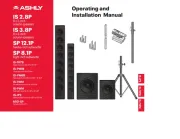
29 Juli 2025

28 Juli 2025
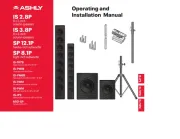
28 Juli 2025

28 Juli 2025

28 Juli 2025

28 Juli 2025
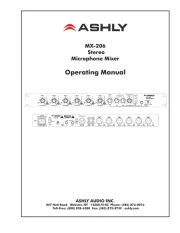
22 Juli 2025
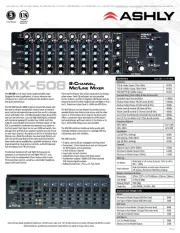
22 Juli 2025
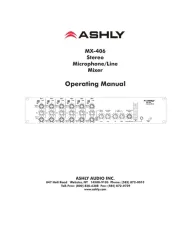
22 Juli 2025
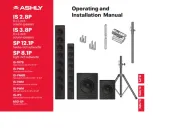
22 Juli 2025
Handleiding Niet gecategoriseerd
- Pengo
- Senal
- SMAJAYU
- Apantac
- Excalibur
- Einhell Bavaria
- Flexispot
- Daisy
- Urban Glide
- PeakTech
- Patton
- Ghibli & Wirbel
- ST
- Anthem
- Kern
Nieuwste handleidingen voor Niet gecategoriseerd
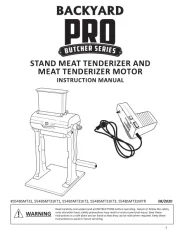
18 September 2025

18 September 2025

18 September 2025

18 September 2025

18 September 2025

18 September 2025
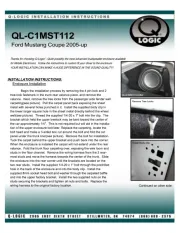
18 September 2025
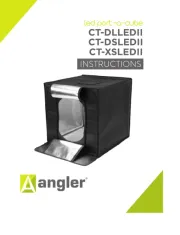
18 September 2025

18 September 2025

18 September 2025